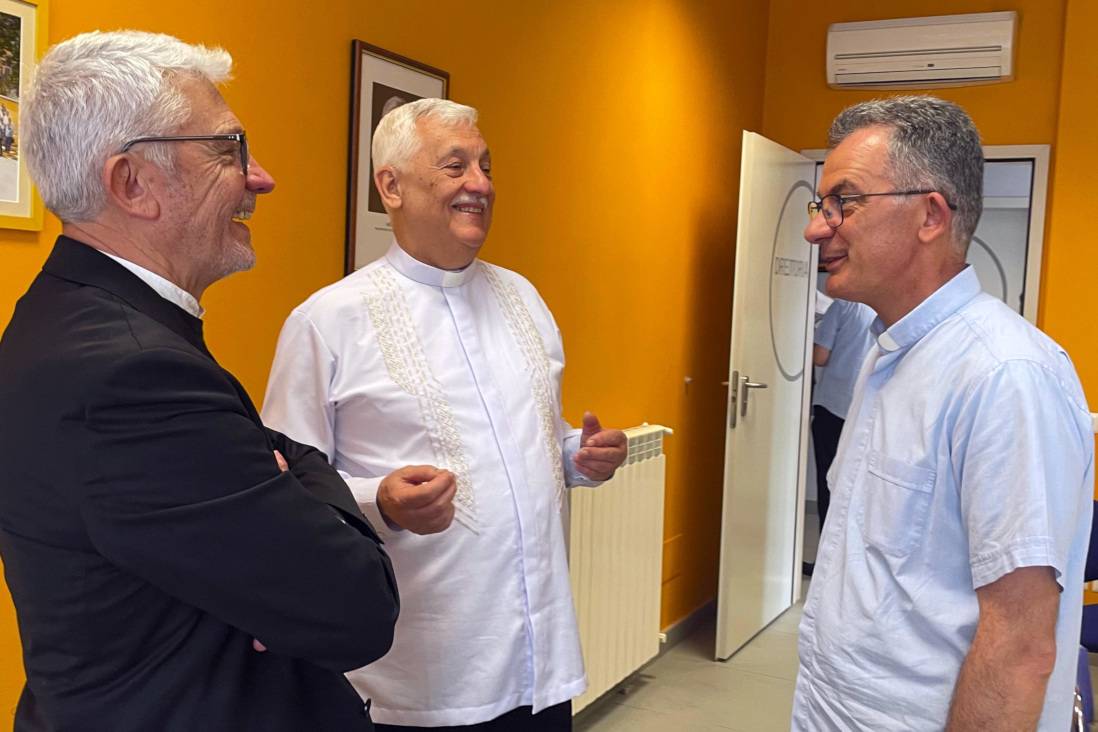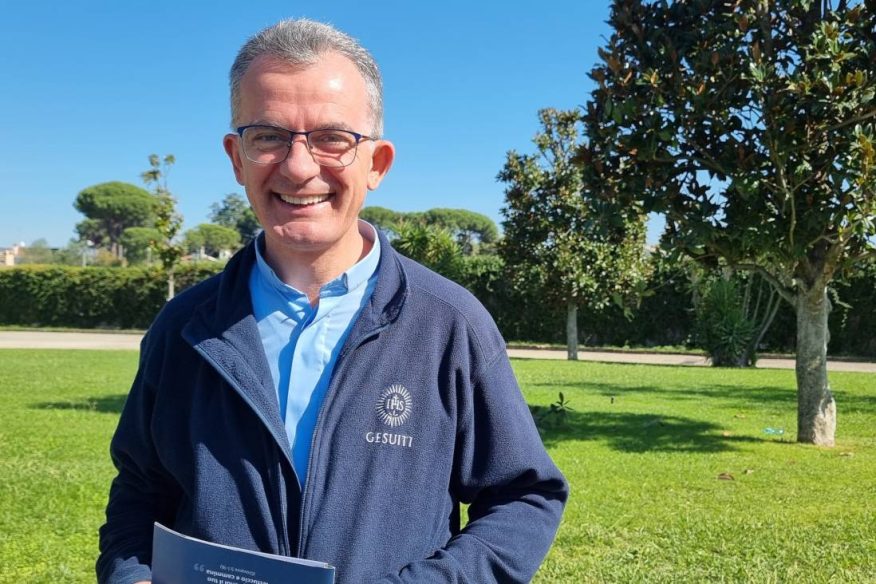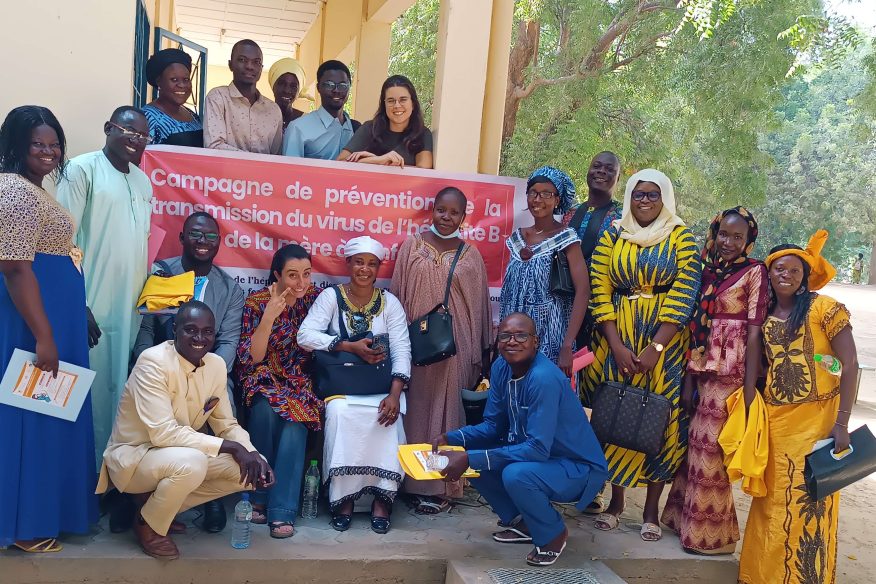“Welcome to Albania, fr. Sosa”

After 30 years, Fr. General returns to Albania. “This is a very important moment for us Jesuits and for the collaborators with whom we share the mission,” Fr Zef Bisha SJ, Superior.
“It was Fr Peter-Hans Kolvenbach who visited the country in 1994 after the fall of the regime. In these days we are living in the liturgy the time when Jesus confirms his disciples in love, hands over and prepares them for the mission. It is with these sentiments that we welcome Fr. Arturo Sosa, who has come to visit the Jesuits in Albania, the good that the Society has done for so many years in this small place, but with a great history, a place of martyrdom and witness to the faith, a significant place that gathers so many realities committed to the mission. He comes to confirm the brethren in joy, to work together as companions of the least Society of Jesus. Many would have liked to be with us for this beautiful moment. They will follow us wherever they are. Welcome Fr Arturo in Albania”.
There are currently 3 Jesuits in Albania. Two fathers in Shkodra engaged in the Pjeter Meshkalla College and one in Tirana, pastor of the Sacred Heart Church.
Father General is visiting the school in Shkodra today. Tomorrow he will be in Tirana and inaugurate the new cultural-social centre and the Catholic bookshop, in the new spaces built next to the church.

The Jesuits in Albania: History and Works
The Jesuits first entered Albania in 1841, but from the 16th century many Albanians went to Rome to study in the universities entrusted to them. In 1700, under the papacy of Clement XI (1700-1721), who was from Albania, the Jesuits took a direct interest in Albanian culture.
The arrival in Albania
It was the Bishop of Shkodra, Luigj Gugliermi (1838-1853), who requested their presence to open the seminary for the clergy and to give them formation. Despite the resistance of Father General, Joannes Philipp Roothaan (1829-1853), the first three fathers from the Sicilian Province arrived in Shkodra in April 1841. Exploring the new land and inculturation were the first challenges. Many difficulties were also encountered due to the presence of the Turks. The mission was entrusted to the Venetian Province. Above all, it was difficult to reconcile the evangelical values of the Catholic faith with those introduced by the customary law of Lek Dukagjini, which was radically implanted in families. This precarious balance often generated sanctions including, very widespread, blood feuds.
The Formation of the clergy
In the few years of its existence, the Albanian Collegium Pontificium has given a solid formation to the clergy, and produced strong thinkers, numerous writers and important names in Albanian history and literature.
The first printing house
In 1870, a small printing house, Shtampa e Shtypit (The Seminary Printing House) and later Shtypshkronja e Zojës se Paperlyme (The Immaculate Printing House), was opened, the only one in Albania for more than 40 years. A number of important volumes were published here, as well as a number of magazines and other materials.
St Francis Xavier College
St Francis Xavier College was founded in 1878 and later became the Xaverian College (Kolegja Saverjane) for accounting studies. Later with the arrival of the Austrians in Albania, it became a state classical high school, educating people of great culture and intellectual preparation.
Other activities
The foundation of the Confraternity of Christian Doctrine in the following years in Shkodra is worth mentioning, as well as the Foundation of the Mission of the Visitation in Shkodra, the Foundation of the Charitable Society of St. Joseph and of St. Vincent de Paul Hospital. In 1891 the Messenger of the Sacred Heart was published, and in 1910 the Albanian Mission of the Visitation was founded in Shkup, Kosovo. This was followed by the publication of the newspaper Pëparimi (Progress) in Shkodra. In 1922 the Sacred Heart Orphanage was opened in Shkodra, and the magazine Leka started being published. In 1932 the foundation of the Apostolic School of the Society of Jesus, and the Don Bosco Association of Jesuit Students were established, and the Sacred Heart Cathedral in Tirana was opened in 1941.
The Church of St Joseph in Shkodra and the Sacred Heart in Tirana
The small chapel of the seminary could no longer satisfy the growing demands of the faithful.
Hence in 1870, the Jesuits decided to build a new church near the seminary, which would later be called St Joseph.
In Tirana, the Sacred Heart Church was built at the beginning of the Second World War. The Jesuits built a primary school in 1920. A church was built nearby, but it was too small for the needs of the people. In 1937 work began on the construction of a new building. Father Superior was Fr. Luigi Santi from Friuli, brother of the engineer who donated the church project. Fr. Paolo Dezza was the Provincial. The work was interrupted in 1939, the year of the Italian invasion, but was resumed. The church was completed in 1941, but without the bell tower that would have prevented planes from landing on the runway of the nearby airport. In the same year it was consecrated by Archbishop Vincenzo Prennushi on the feast of the Sacred Heart. The joy of the small Catholic community was great. At the time of its inauguration, it could gather more than 1,500 people standing, according to letters sent by the Jesuits to the Venetian Province.
A mission in a spirit of ecumenism
In Tirana, the mission continues in the same style of openness and welcome, collaboration and respect, especially with the other religious denominations present in the city. Next to the church was the house of the fathers, an orphanage, and a service for the poorest.
The mission carried out in Tirana left a strong mark on the people and on the different religious denominations present at the time. The spirit of authentic ecumenism, traditional in Albania, between the three religious groups was also evident in the Church: a large number of Muslim and Orthodox Christians contributed to the construction of the new Catholic Cathedral. The side chapel, now the Blessed Sacrament, was reserved for the Greek-Byzantine rite.
Arrival of the regime and suppression of the Jesuit mission
In 1945, the government of Enver Hoxha arrived in Albania and began to persecute religions again, especially the Catholic Church. Hoxha’s attempt was to create a ‘national’ autocephalous Church in order to control this ‘dangerous’ presence for his government.
As a first step, Enver Hoxha demanded that each denomination in Albania present its own statutes. The communist regime eliminated, shot, imprisoned and tortured clergy and laity, and expelled the remaining foreign Jesuits. Among the victims of this sad period, we remember with pain Frs Daniel Dajani – last Rector of the College and Seminary – and Gjon Fausti, shot in 1946, and Br. Gjon Pantalija, who died in 1947. Frs Pjetër Meshkalla, Mark Harapi, Gjon Karma, Anton Saraçi, Giacomo Gardin, Anton Luli, Gjergj Vata were among those imprisoned. All of them, though persecuted, remained faithful to their ideals.
In 1946, the Pontifical Seminary and the Xaverian College were closed, while the Church of the Sacred Heart in Tirana was entrusted to the diocesan clergy.
In 1967 a series of reprisals against the clergy began, followed by the destruction of icons, sacred objects, relics and entire libraries. Several priests were also shot, including Jesuits, for remaining faithful to Christ to the end.
The church remained open until 1967, when anti-religious persecution became so total that it was turned into a theatre and cinema. The altars and marble were systematically destroyed, the façade became a grey concrete rectangle to obliterate its memory, and even the most beautiful organ in the Balkans was removed.
The return to Albania
On 18 May 1991, a delegation from the Holy See landed in Tirana. It included Ercole Lupinacci, an Italian-Albanian, Bishop of Lungro; Vincenzo Paglia, Parish Priest of Santa Maria in Trastevere in Rome and Assistant of the Community of St Egidio; and Pedro Biondan Maione, SJ. He was the first Jesuit to visit Albania since the end of the communist persecution.
The keys to the Sacred Heart Church were personally handed over to Mother Teresa, who reopened it on 23 March 1991. The Mother had brought something to set a sign in this abandoned warehouse: a statue, and a carpet. From that day on, the Jesuits, with the help of many people of good will, took over the work of restoration.
The first objective was to give an ethical-religious education to a people who had suffered 50 years of materialist propaganda.
The socio-political formation course: education for justice
In 1991, the Albanian people finally began to experience democracy. In 2004, the Jesuits in Tirana offered an opportunity to learn about and deepen the value of democracy, especially so that young people (students, graduates, workers or professionals) could master the tools of democratic participation in order to build the country’s future.
The socio-political formation course, which had about 80 to 100 students per year, included the basic elements of democratic life, an in-depth knowledge of the Albanian constitution and social and political institutions, as well as knowledge of the constituent elements of the European Union, since the Albanian state had applied to join it. In addition, it proposed to take a look at the social doctrine of the Church, as an offer for reflection on moral and social content that could help the growth of a democracy in a more human, just and fruitful sense.
Such a proposal, reinforced by the constant presence of two Jesuits working with an Italo-Albanian team, was intended to be a testimony of the way in which the Christian faith seeks to incarnate itself in the history of a people, helping them to grow in the fullness of their humanity.

